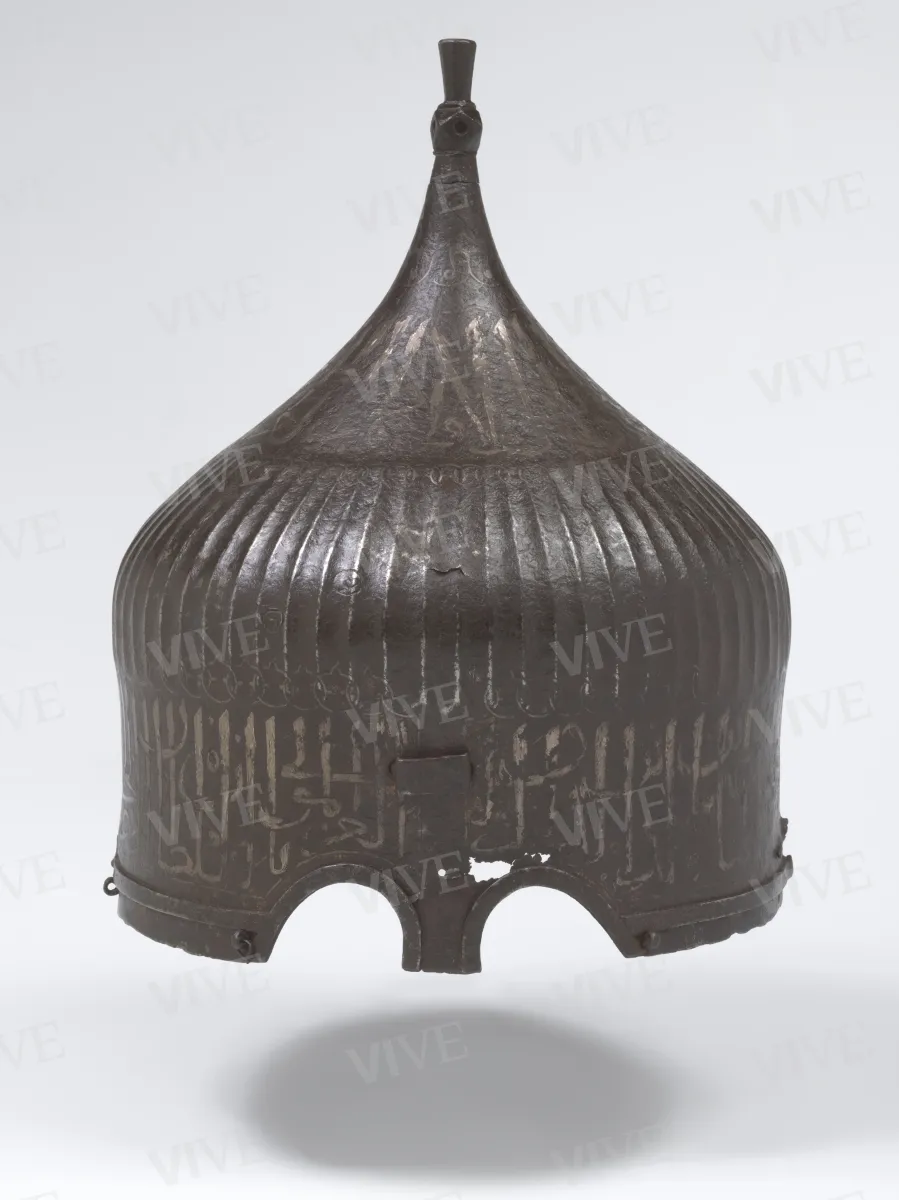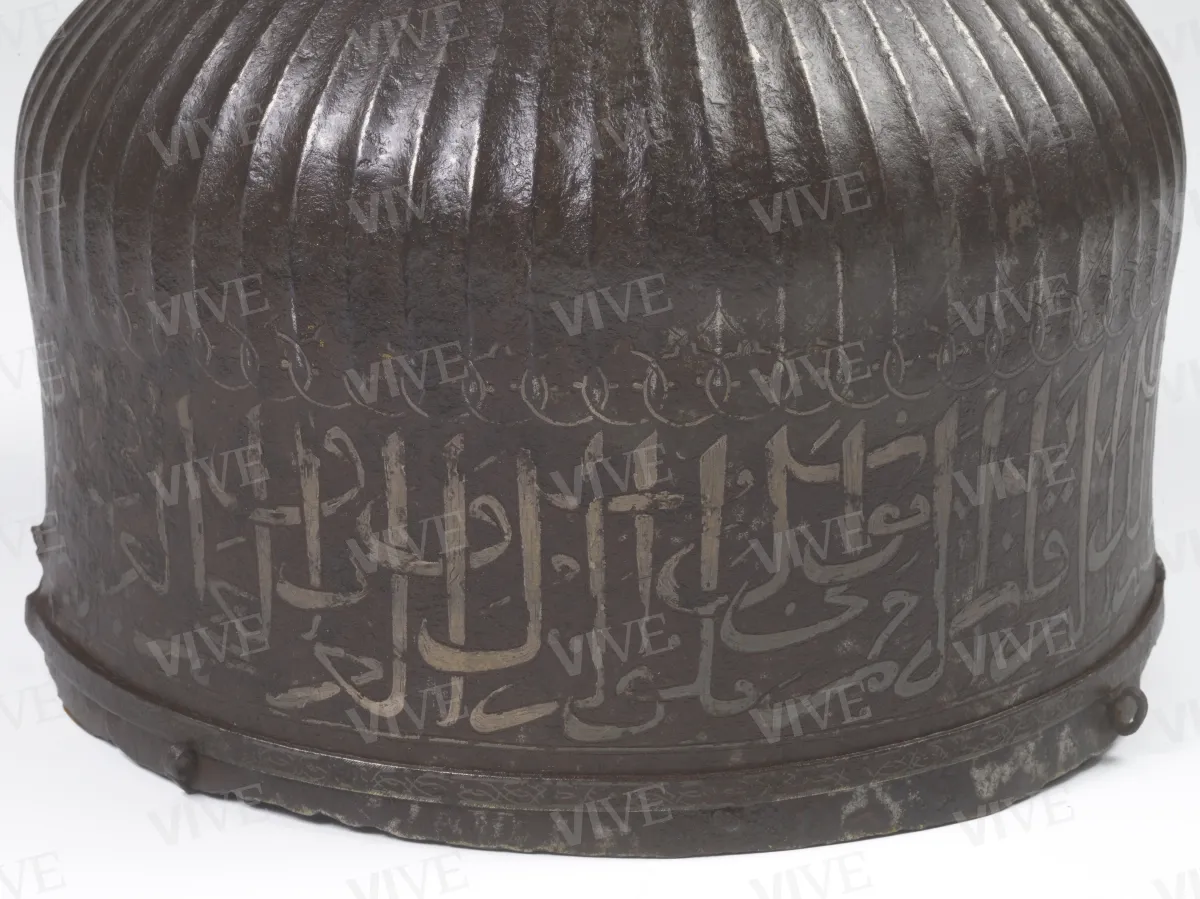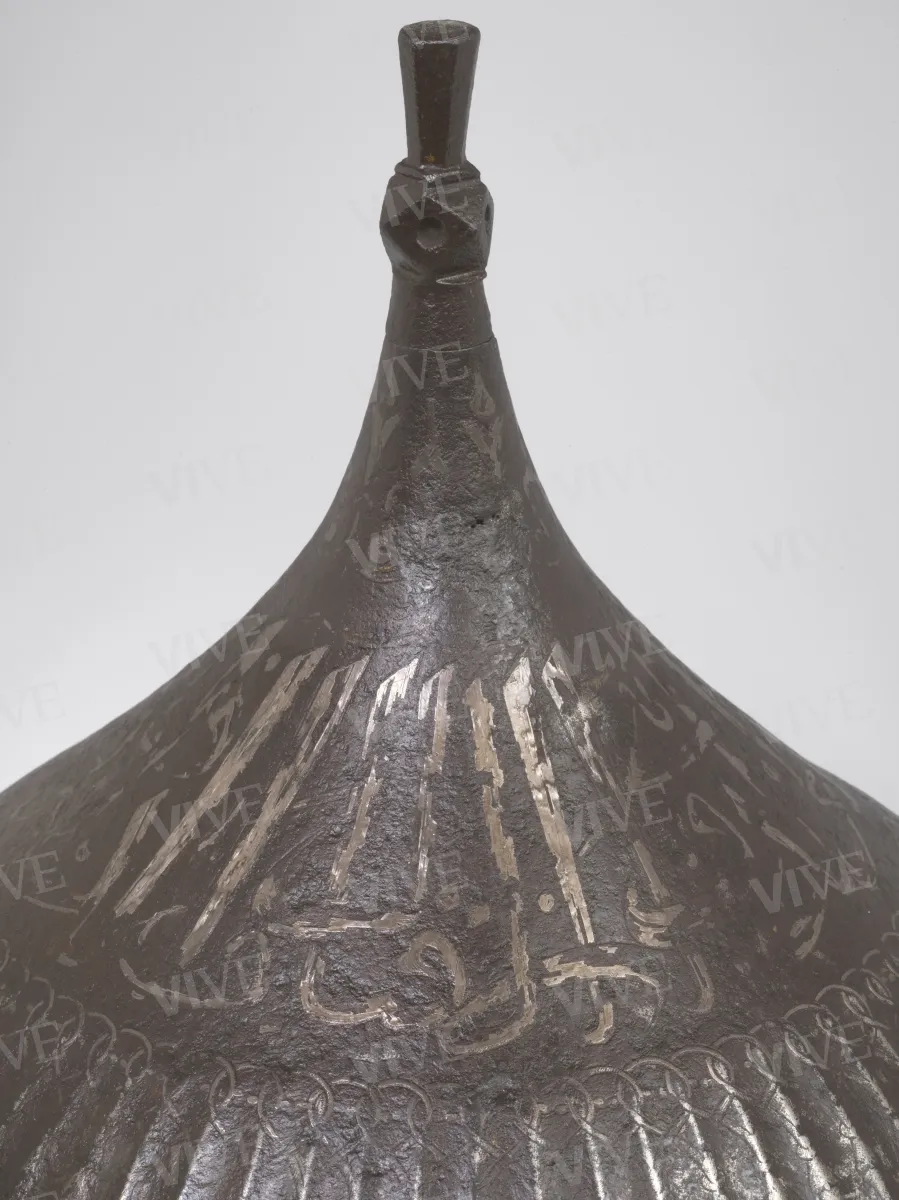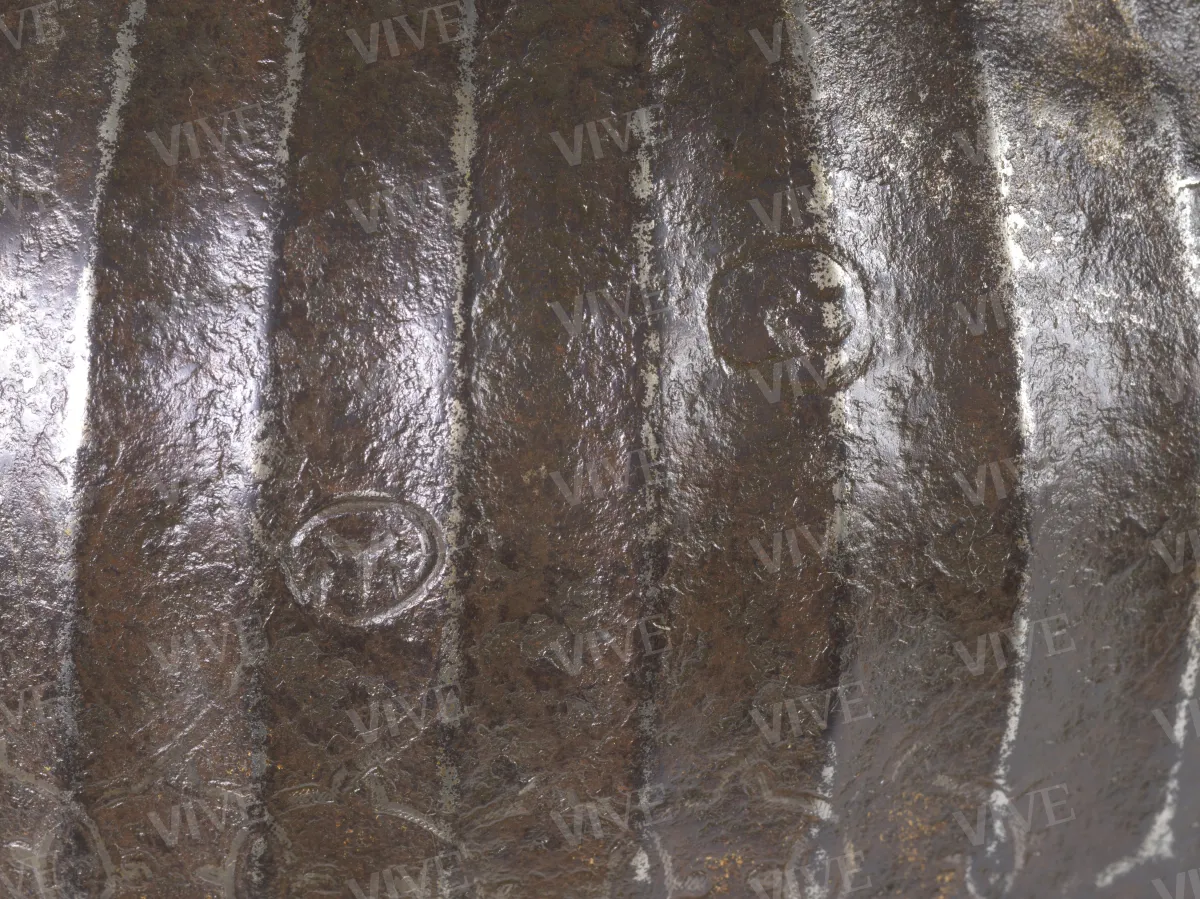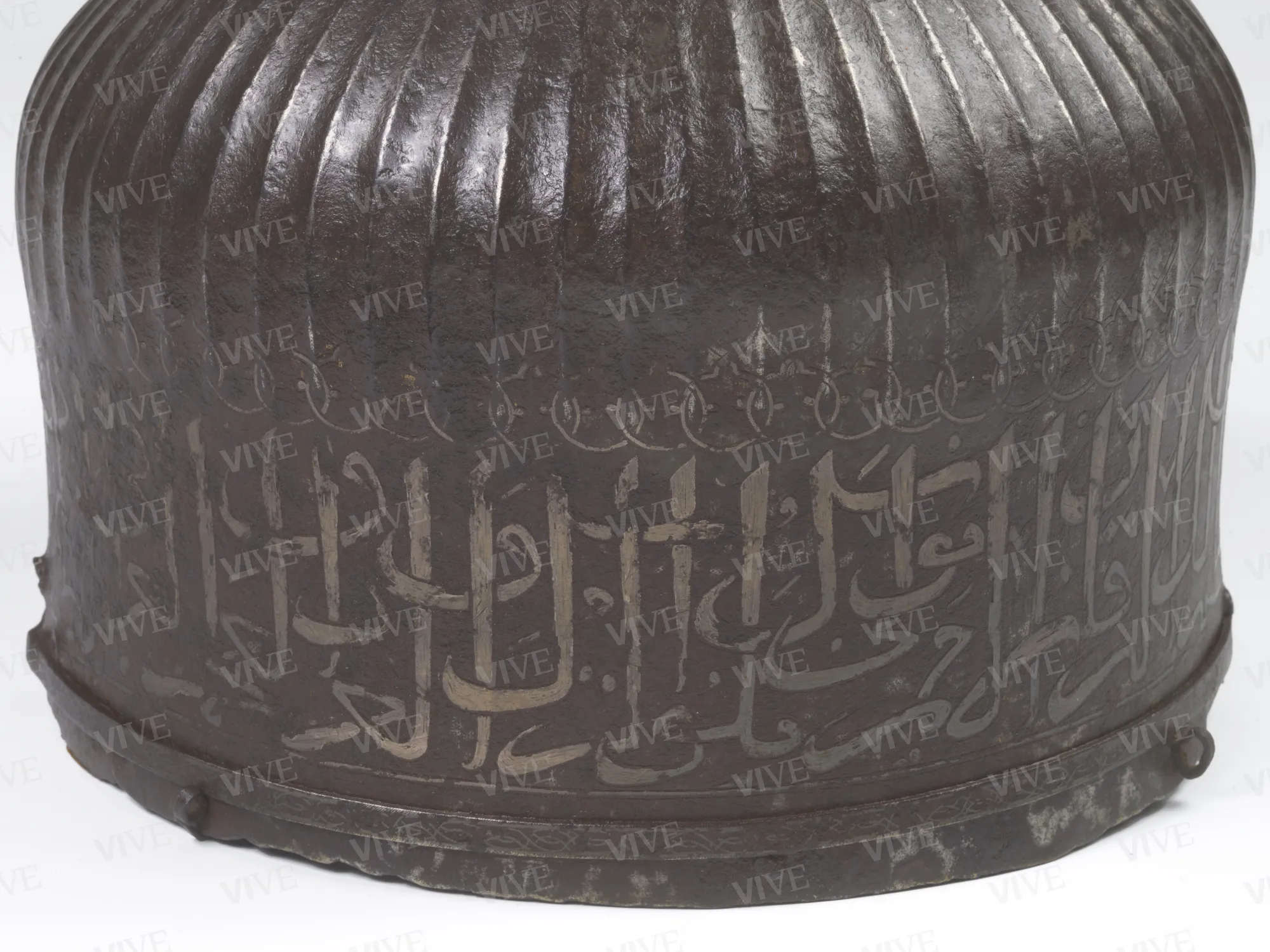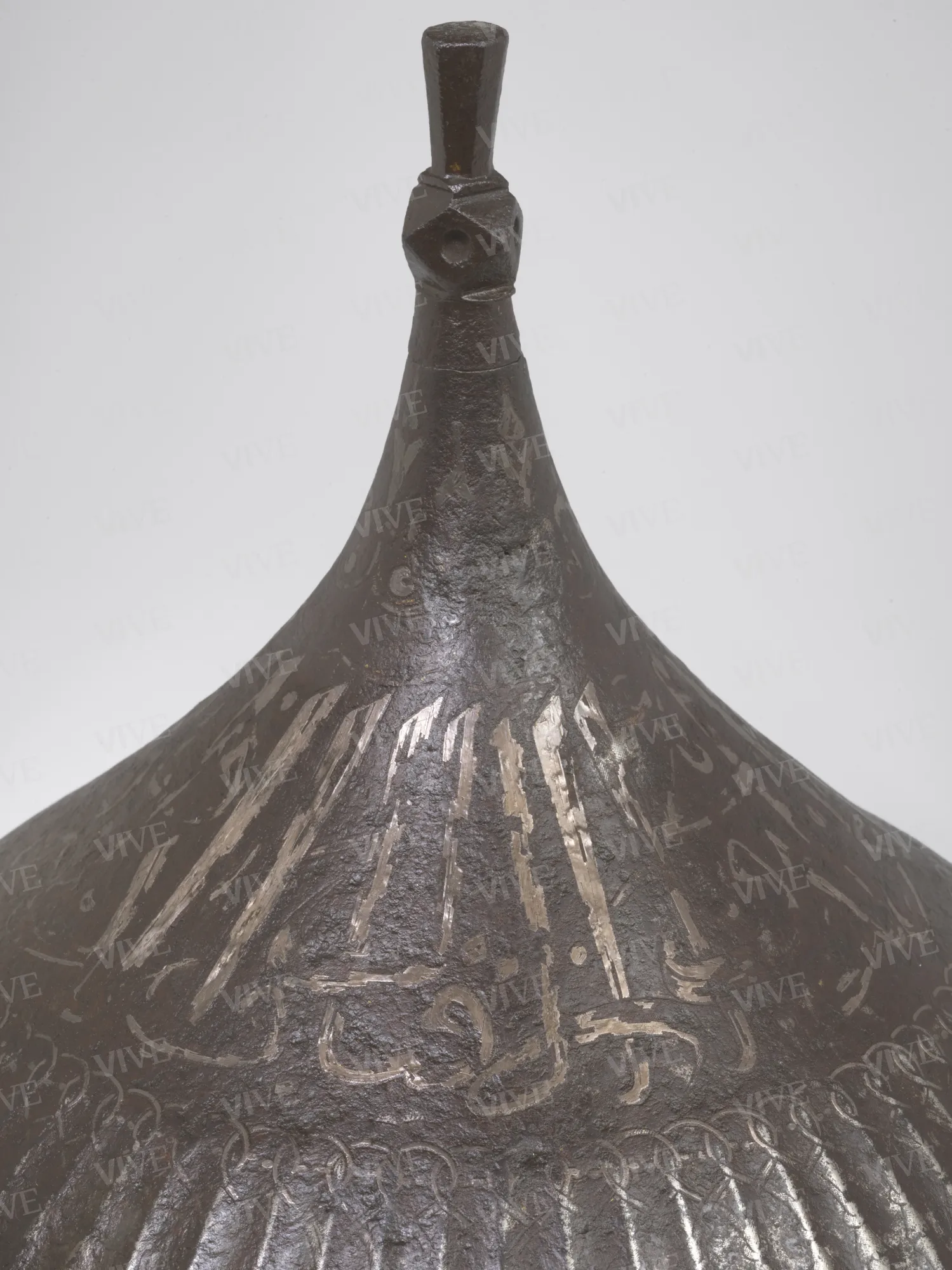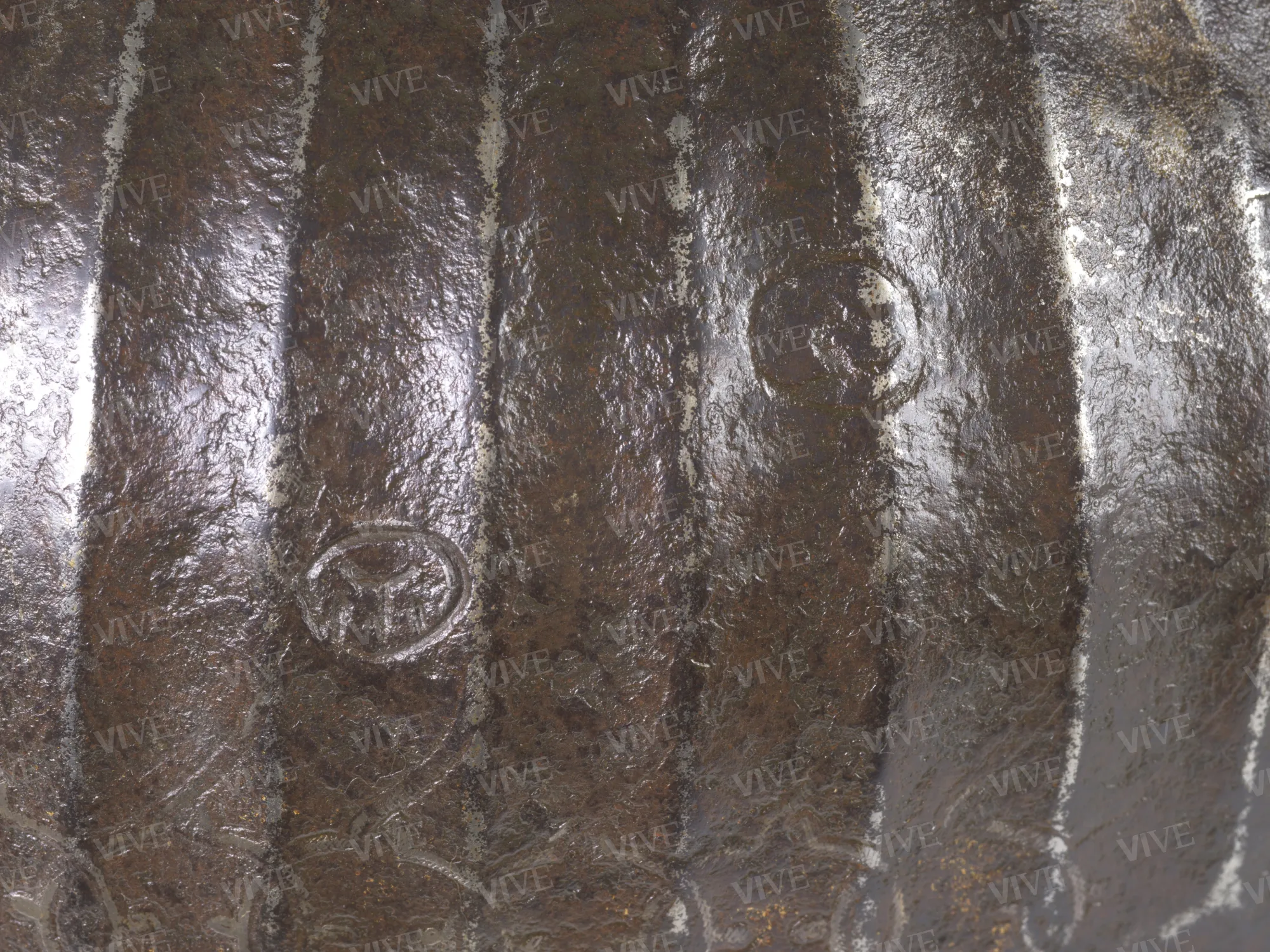Turkoman helmet
Anonymous 15th century
Cylindrical skullcap, flared at the bottom; then slightly widened conical shape, surmounted by a peak, supported by a multifaceted dado-shaped node. The cylindrical shell has two semicircular slits for the eyes; a now lost bridge for a sliding nose protector must have been present in the center above these slits. An iron strip with a rectangular cross-section contours the slits and continues along the rest of the skullcap just above the lower edge. In the narrow band left free below the strip are attached the rings for the aventail, which is also missing. The shells contain traces of swirl motifs.
Cylindrical skullcap, flared at the bottom; then slightly widened conical shape, surmounted by a peak, supported by a multifaceted dado-shaped node. The cylindrical shell has two semicircular slits for the eyes; a now lost bridge for a sliding nose protector must have been present in the center above these slits. An iron strip with a rectangular cross-section contours the slits and continues along the rest of the skullcap just above the lower edge. In the narrow band left free below the strip are attached the rings for the aventail, which is also missing. The shells contain traces of swirl motifs.
Details of work
Catalog entry
This type of helmet (miğfer) has often been called a "turban helmet," of which several specimens have been preserved. It most likely comes from the eastern Azerbaijani-Anatolian context, where it was made for the Aq Qoyunlu dynasty, as attested by several other similar specimens (e.g., New York, Metropolitan Museum of Art, no. 04.3.211). It may also have been produced in that context for an Ottoman clientele. Several such specimens were looted after the Battle of Chaldiran, when the Ottomans defeated the Safavids in 1514.
Michele Bernardini
State of conservation
Mediocre; shows losses in the encrusted inscription and corrosion in some parts of the metal; some attached elements are missing and shows evidence of metal deterioration.
Inscriptions
On the shell of the helmet:
[...] العز المولانا السلطان العظم الخان المعظم مالك الرقاب
"Glory to Our Lord the Great Sultan, Sovereign Supreme Vigilant King [the last part is illegible]";
at the top:
العز في الطاعة الغنى في القناعة
"Glory in obedience, riches in fulfillment".
Coats of arms, emblems, and marks
Three punched inscriptions specify the arsenal of Hagia Irene in Constantinople.
Provenance
Collezione Odescalchi (n. 1517).
Exhibition history
Rome, Palazzo Venezia, Antiche armi dal sec. IX al XVIII, May–July 1969.
Sources and documents
OA report, Soprintendenza per i beni storici ed artistici di Roma, no. 620, signed by Nolfo Di Carpegna (October 29, 1977);
G.F.N. Photograph, F. 10607
References
di Carpegna Nolfo (a cura di), Antiche armi dal sec. IX al XVIII, già collezione Odescalchi, catalogo della mostra (Roma, Palazzo Venezia, maggio-luglio 1969), Roma 1969, n. 69;
Kalus Ludvik, Les armures des Timourides des Aqqoyunlus et des Shirvanshahs, in Golombek Lisa, Subtelny Maria (a cura di), Timurid Art and Culture. Iran and Central Asia in the Fifteenth Century, Leiden-New York-Koln, 1992, pp. 158-167 ;
Rogers John Michael, Empire of the Sultans: Ottoaman Art from the Collection of Nasser D. Khalili, London 1995, nr. 84-85;
Civita Francesco (a cura di), Islam. Armi e armature della collezione di Frederick Stibbert, Firenze 2014, nn. 11-12.

